Steelcase’s new Melbourne WorkLife showroom is a workspace that puts product into action, exploring the possibilities of hybrid working.

Steelcase WorkLife Showroom, photography by Dianna Snape
April 6th, 2022
For a company that designs spaces to help people work, learn and care for themselves, introducing a hybrid showcase to support our collective move towards hybrid working was a natural ‘next step’ for Steelcase. Working with Hickory as a real estate partner, Steelcase’s Market Lane-located showroom blends retail flagship with hybrid workspace.
Every one of Steelcase’s showrooms is named “WorkLife”, demonstrating Steelcase’s product range and the research and strategy that drives the brand forward. This latest brand destination sheds new light on the concept, with Lloyd Thomas, senior interior designer with Steelcase, tackling the challenges of hybrid working by utilising the Steelcase Flex Collection that adapts to and changes for each user’s needs.

“Australia is a growing market for Steelcase, where we needed a space that could both represent our brand and also connect with the local community and culture of Melbourne. Hickory was selected as a real estate partner as their brand values and ethos aligned with our own, which we believed would create a great synthesis,” says Thomas.
“We aspired to create a space that reflected not only the culture and context of Melbourne but also reflected the hybrid work experience. Melbourne is itself a progressive, young city, where we saw the potential to create something that spoke to the future of work but also felt very much a part of Melbourne.”

Over the course of the pandemic, long periods of working from home have redefined what the role of the workplace will now be. The need for connection and community has never been stronger.
“For Steelcase, authenticity is an important aspect of our WorkLife experience. We want our spaces to reflect not only our breadth of products but also our workplace strategies and research. Our product ecosystems are powerful workplace tools, adapting to new hybrid work experiences,” says Thomas.
“So, for Melbourne WorkLife we wanted the space to be able to function as an office too, with all the tools and equipment necessary to support ‘working better’. Our aim for customers was to create an experience that highlighted not only our product ecosystems, but also spoke to the changing nature of work, and rapidly changing market.”

The space is multi-modal and houses different zones that highlight the brand’s adaptability to various work environments and floorplans. Key products such as Steelcase’s Flex Collection can be easily moved and reconfigured around the space to harbour different working and hosting modes.
The showroom allows the people to decide how to control the space. The entrance has informal spaces for casual customer interactions. An open collaboration zone, easily adjustable in size, allows for groups digitally and physically to connect. There are also workspaces shielded away for privately focused work. The seamless transitions between these spaces highlight Steelcase’s goals: to explore the possibility of a redefined office space.
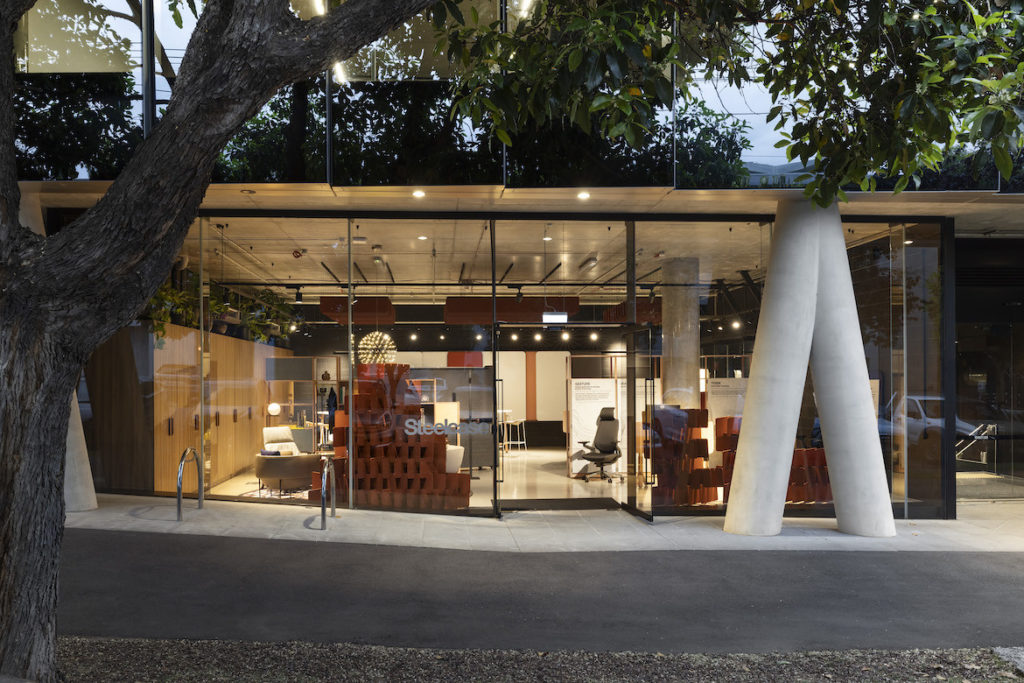
“Together, all these products from the Steelcase Flex Collection form a powerful ecosystem for group or teamwork, but can also be separated for more private moments of respite,” says Thomas. “Access to hybrid working technology, such as mobile video conferencing, portable mobile power and areas of privacy help complete the hybrid work experience and ensure seamless integration across platforms.
“Architecturally, we made sure to keep the space open and free of intrusions; multi-modal. This allowed us to zone the space through product, allowing for maximum flexibility. The furniture and applications we selected formed ecosystems that worked with one another, demonstrating how you could transition easily between different modes of work, following our Work Better workplace strategy,” he says on the aimed experience.

There is a hesitation to return to the office. The tools and experience Steelcase provide, however, confront this challenge. Steelcase takes a bold step – blending between open to private spaces to utilising furniture that adapts and works to care for you.
“We have workstations for more focused work, open areas for collaboration, as well as more sheltered spots for privacy and socialising with colleagues. So in this way, the challenge of the office will be to foster this sense of belonging, to provide experiences that shift easily and make people feel safe.
“A large proportion of our product portfolio aims to help solve these needs; to create experiences that bring the energy, spirit and sense of community back to the office.”
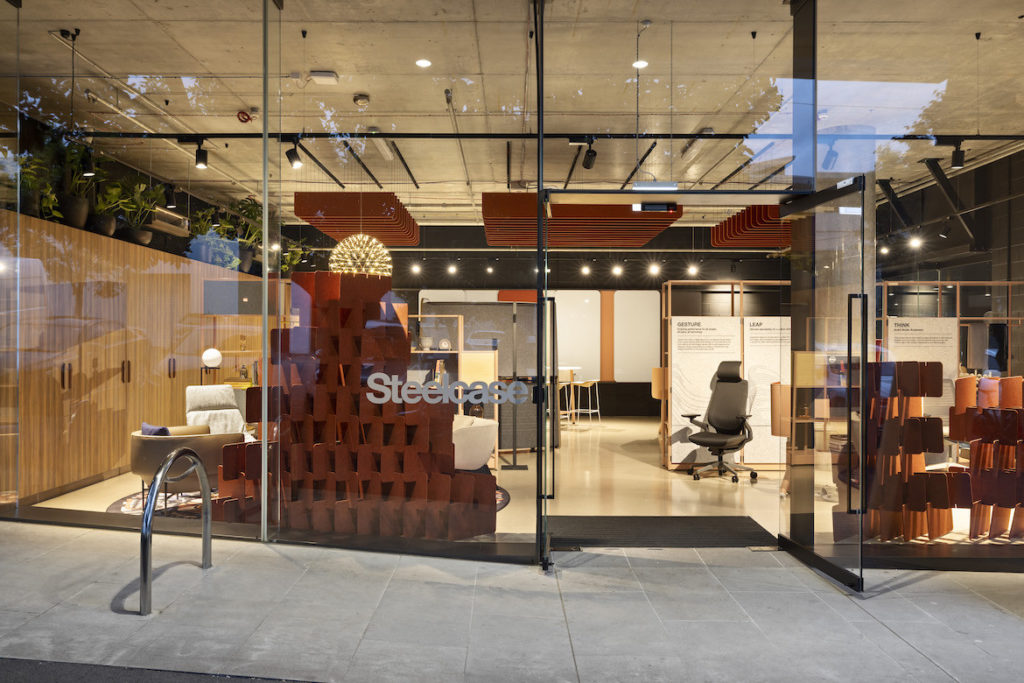
Steelcase
steelcase.com
Photography
Dianna Snape
We think you might also like this article on Steelcase designs modernising the workplace.
INDESIGN is on instagram
Follow @indesignlive
A searchable and comprehensive guide for specifying leading products and their suppliers
Keep up to date with the latest and greatest from our industry BFF's!

Welcomed to the Australian design scene in 2024, Kokuyo is set to redefine collaboration, bringing its unique blend of colour and function to individuals and corporations, designed to be used Any Way!

A longstanding partnership turns a historic city into a hub for emerging talent

London-based design duo Raw Edges have joined forces with Established & Sons and Tongue & Groove to introduce Wall to Wall – a hand-stained, “living collection” that transforms parquet flooring into a canvas of colour, pattern, and possibility.
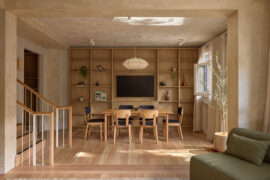
Merging residential living with the retail experience, the latest project from In Addition breathes new life into shopping for the home.
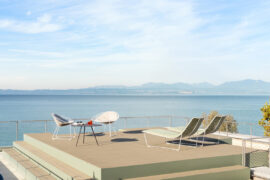
Arper expands its outdoor offer by re-engineering some of its most recognisable indoor pieces for life outside.
The internet never sleeps! Here's the stuff you might have missed
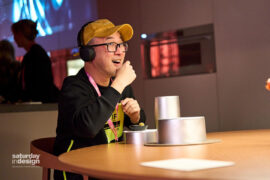
Responding to the theme of ‘Resonance – Evoking emotion through physical design,’ V-ZUG and the Whitehouse Institute of Design are the 2025 Saturday Indesign Project winners.
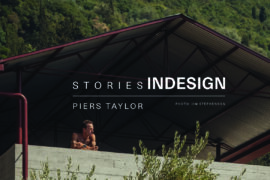
Piers Taylor joins Timothy Alouani-Roby at The Commons to discuss overlaps with Glenn Murcutt and Francis Kéré, his renowned ‘Studio in the Woods,’ and the sheer desire to make things with whatever might be at hand.
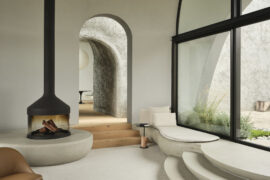
Leeton Pointon Architects and Allison Pye Interiors have been awarded as the winner of The Living Space at the INDE.Awards 2025 for their exceptional project House on a Hill. A refined and resilient multigenerational home, it exemplifies the balance of architecture, interior design and landscape in creating spaces of sanctuary and connection.
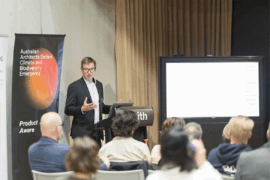
In a landscape clouded by data and greenwash, Product Aware offers architects and designers a common language for sustainability. Embraced by suppliers – including Milliken – it is setting a new benchmark for trust and bringing clarity and accountability to material specification.